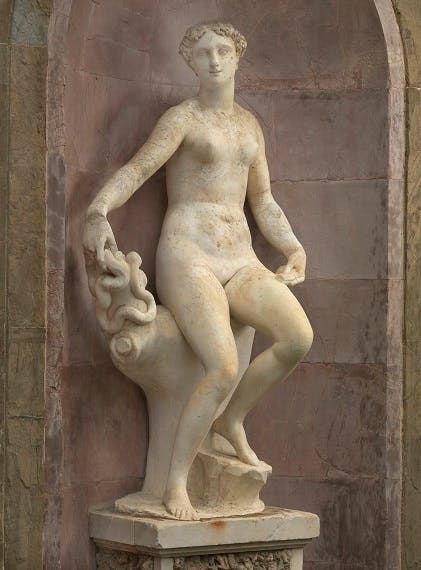Ceres
Baccio Bandinelli (Florence 1493 – Florence 1560) and workshop
Initially, the statue was destined to be the figure of Eve in the group of Progenitors for the choir of Florence Cathedral, but it then suffered the same fate as the statue of Adam which was turned into Bacchus: it was discarded and placed somewhere different. The fact that certain elements of the artwork are less refined than others, such as the head and hands, for example, leads us to think that they may have been completed by another sculptor, probably Baccio Bandinelli’s assistant, Giovanni Fancelli. The large area of stucco visible on the left arm and the small ones on the right arm testify to the presence of ancient fractures, perhaps due to a flaw in the block of marble that may have only become visible once the work was already in an advanced phase. This could be the reason why the work was discarded from the design for the Cathedral. It was Vasari, in his capacity as court architect, who decided to place the sculpture on the facade of the Buontalenti Grotto (still a nursery at the time) in 1560, in a pair with the Apollo created by the same sculptor and the workers in his studio. Ceres is sitting on a tree branch, holding a snake in her right hand; in the past, this symbol was wrongly mistaken for a reference to Cleopatra. In fact, the snake is one of the attributes of the goddess of the earth, as are the ears of wheat she holds in her left hand.
